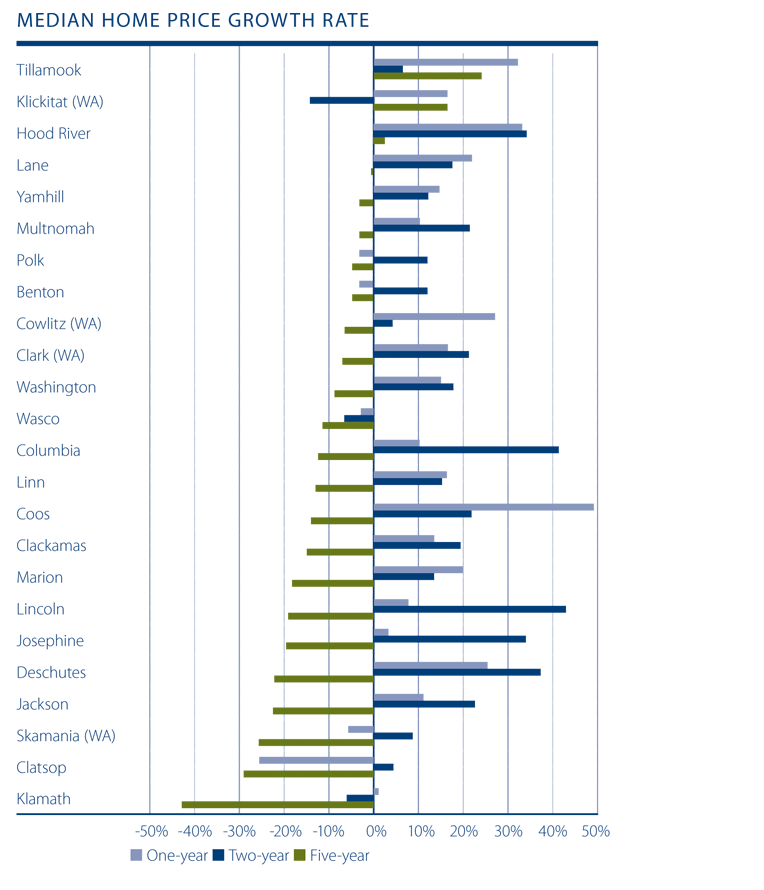Windermere Real Estate is proud to partner with Gardner Economics on this analysis of the Oregon and Southwest Washington real estate market. This report is designed to offer insight into the realities of the housing market. Numbers alone do not always give an accurate picture of local economic conditions; therefore our goal is to provide an explanation of what the statistics mean and how they impact the Oregon and Southwest Washington housing economy. We hope that this information may assist you with making an informed real estate decision. For further information about the real estate market in your area, please contact your Windermere agent.
Regional Economics
On an annualized basis, the Oregon counties covered by this report increased employment by one percent, or approximately 17,182 jobs. As was discussed in last quarter’s report, job growth remains positive; however, it is limping forward at an anemic pace. Year-over-year, 15 counties saw their employment base expand (down from 19 counties in our last report) and nine saw employment contracting.
That said, it was pleasing to note that all but two counties expanded their job base in the current quarter relative to the previous quarter. In total, 32,000 jobs were added, with substantial rises in employment seen in Washington, Multnomah, Marion, Clark, and Clackamas Counties.
When compared to June of 2012, employment growth was most pronounced in Deschutes County (+3.1%). This was followed by Clark (+2.1%), Tillamook (+1.9%), and Multnomah (+1.7%) Counties. On an absolute basis, Multnomah County maintains its position as the driving force behind job growth, with the addition of 7,500 positions over the past 12 months. This was followed by Washington County (3,900) and Clark County, where employment grew by 2,700 positions.
On the negative side, job losses totaled 3,008 spread across nine counties. Losses were again most pronounced in Marion County, with employment contracting by 1,253 jobs, followed by Cowlitz County (-1,000). Losses in other counties were fairly modest.
We are increasingly seeing the divide between the urban and rural counties relative to improving employment. The larger, more metropolitan counties are recovering, but much of the state is not.
When compared to a year ago, the unemployment rate shrank in every county that was analyzed, other than in Benton County, where it remained at 6.5 percent. This is certainly positive; however, I remain concerned by the fact that there are still seven counties where the unemployment rate remains above 10 percent. As mentioned earlier, these are all more rural counties with employment averaging just over 30,000. It speaks to the dichotomy that exists within Oregon and is something that needs to be addressed.
Of the counties that saw shrinking unemployment rates, the greatest improvement was again seen in Clark County, where the unemployment rate dropped by 2.4 percent to 8.6 percent. This was followed by Klickitat (-1.6%) and Deschutes (-1.2%) Counties. The worst-performing county was Benton, where the rate remained static.
As the greater market is the focus of this report, I cannot raise the grade from the “C-” that I gave it in the last quarter. It is clear that all counties are not created equal.
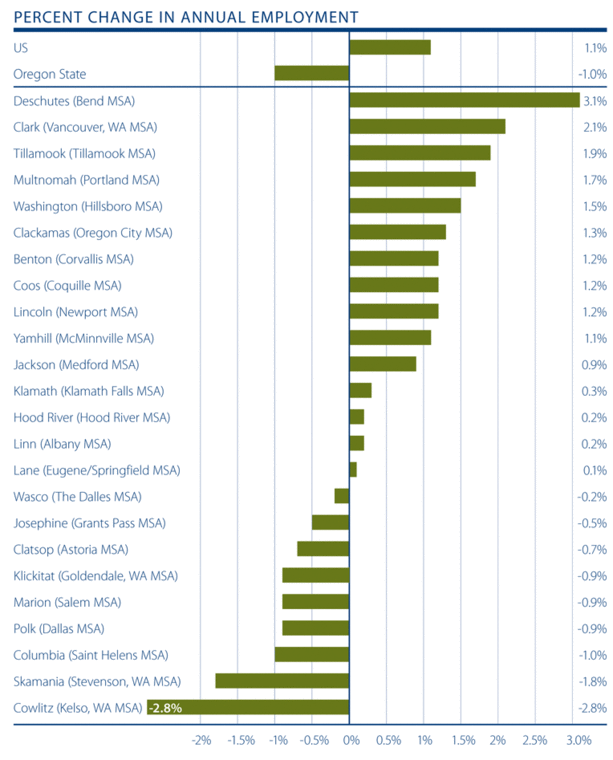
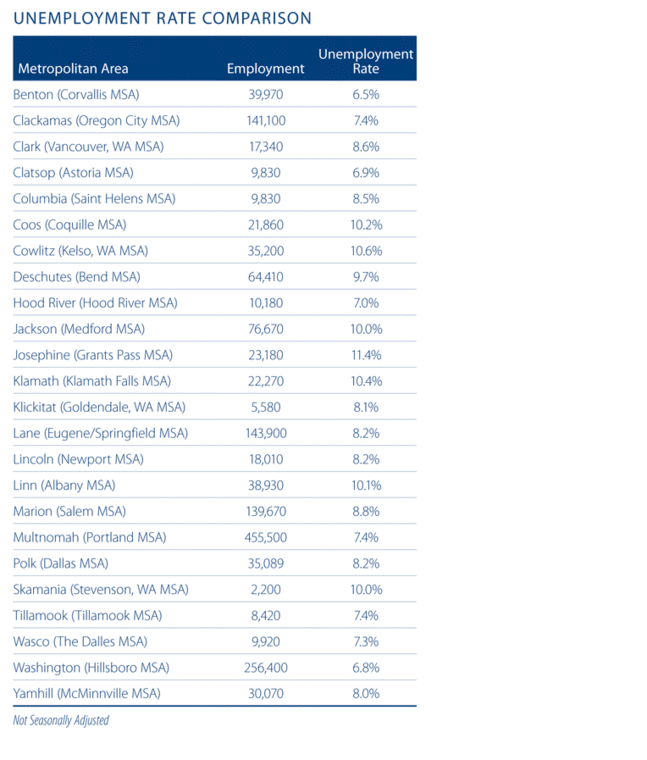
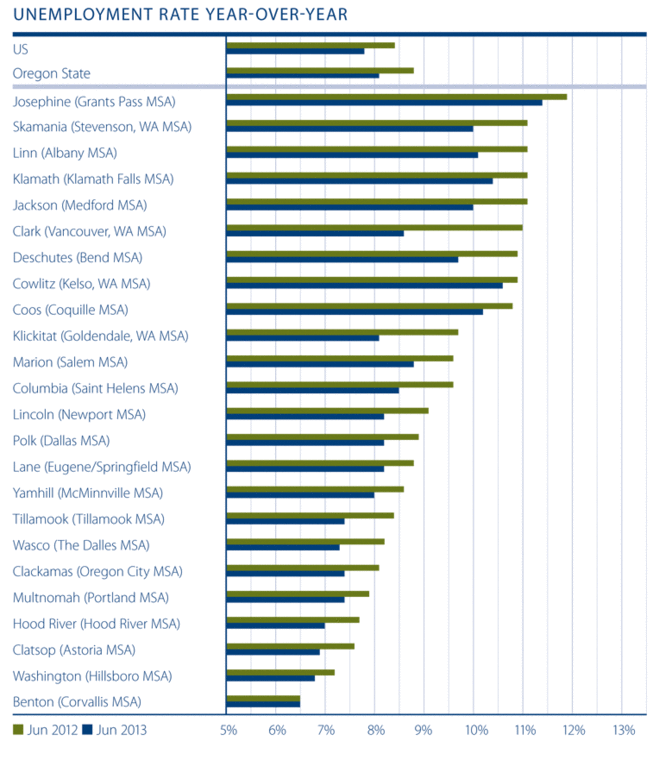
Regional Real Estate
In the second quarter of 2013, the region closed 11,693 home sales—an impressive increase of 43 percent over the first quarter of the year—and when compared to the first half of 2012, sales volumes are up by 15 percent.
The greatest growth in transactions was again seen in Cowlitz County (+52%), and this was followed by Klamath (+51%), Polk and Benton (+40%), and Coos (+39%) Counties. There were just two counties that saw home sales drop when compared to the first half of 2012, with Jackson and Josephine Counties dropping by 12 and three percent, respectively.
Turning our attention to home prices, 19 of the markets analyzed registered year-over-year price increases (down from 21 in the last report), with five showing declines in values from a year ago. In aggregate, the markets surveyed saw home values grow by 12.7 percent over the same period in 2012. This is down from 17 percent in our last report, but not a cause for concern.
The greatest growth was seen in Coos County, where prices jumped by 49 percent over the same period in 2012. This market saw a dramatic drop in home prices at the end of 2012, but has recovered nicely and is now back to where it was in the fall of that year. There is no reasonable explanation for this, as list prices in that market have remained remarkably stable. Of the other counties that saw price growth, 15 saw double-digit increases.

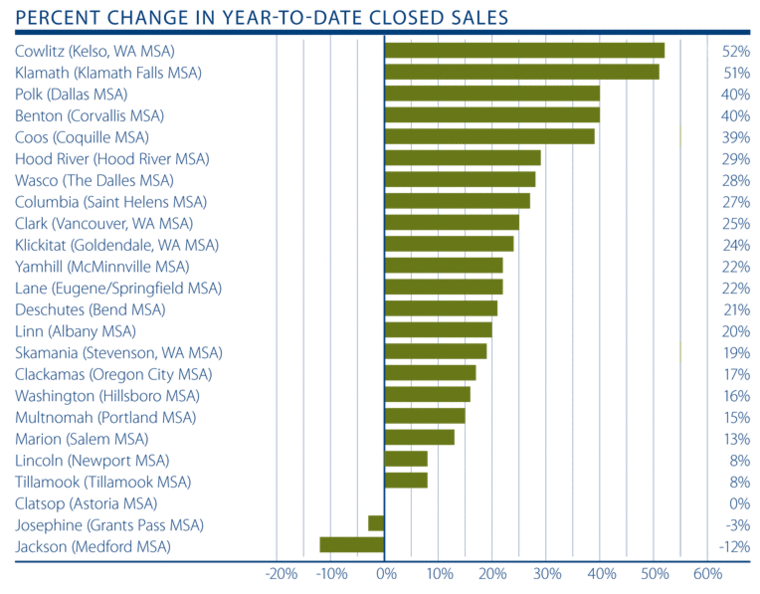
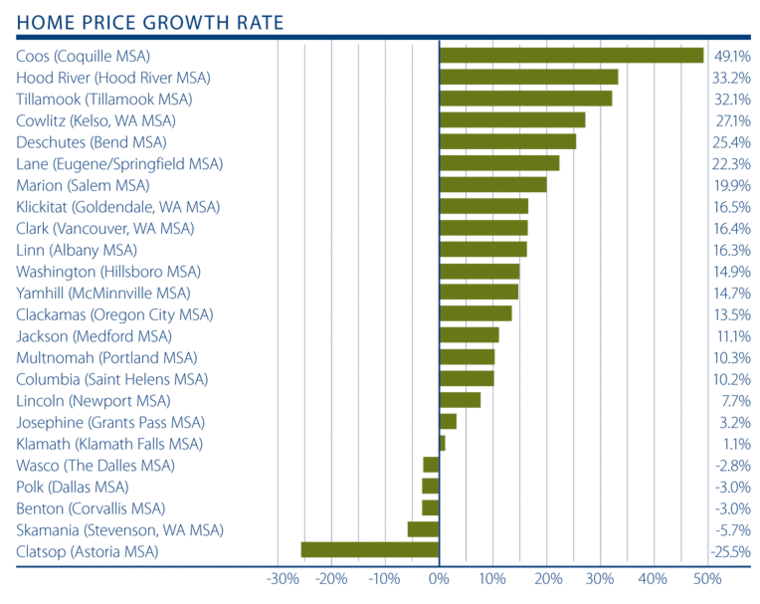
Of the markets where prices went down, the declines were most pronounced in Clatsop County, but that is a market which is prone to substantial swings. Prices shrank modestly in Skamania (-5.7%), Benton and Polk (-3%), and Wasco (-2.8%) Counties.
Relative to the previous quarter, 18 counties saw prices rise and six experienced declines. Countering our last report, where there was a dramatic increase in sale prices in Clatsop County, this time prices dropped by an equally remarkable 26 percent. This is a very small county and therefore prone to wild fluctuations. On the positive side of the equation, substantial growth was seen in Coos (+43%), Columbia (+42.4%), Lane (+28.6%), and Hood River (+23%) Counties.
Belief in the market is clearly apparent. As compared to two years ago, prices are higher in all but three counties, and I am also very pleased to see that prices in three counties are now higher than those seen in the summer of 2008 when the market had already started to collapse.
I also watch the trend in listing prices very carefully, as this is certainly an indicator of the health of a market. Nationally, we are still suffering from a housing shortage—and this is certainly the case in Oregon, as well. As such, it is not surprising to see listing prices grow as demand exceeds supply. Even with this growth in prices, sales velocities continue to rise, which again suggests that the market is in recovery.
Even so, unfortunately I cannot increase the grade for the real estate markets from the “C+” that I gave it last quarter. Supply limitations, as well as increasing interest rates, are likely to keep the market in check for the time being.


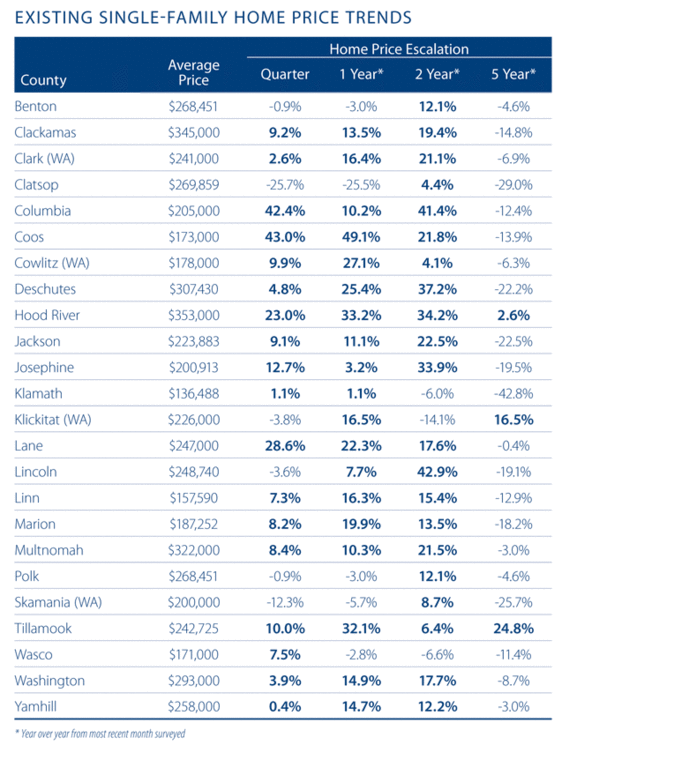
Conclusions
Overall, the Oregon economy continues to expand, but at a somewhat lackluster pace. Increases in manufacturing hours and construction-related employment are helping, but as mentioned earlier, the state continues to become more and more bifurcated.
Statewide employment growth was measured at 1.29 percent in 2012, and through the first half of this year the economy has grown by 1.2 percent—essentially matching the total gains for the previous year.
I am anticipating continued growth for the rest of 2013, but it is unlikely to be substantial enough to have a dramatic effect on the unemployment rate. Expansion is headed by the private sector, and ongoing concerns over healthcare costs will likely lead many companies to not expand their employment bases dramatically until they become comfortable with the new laws.
As far as housing is concerned, I continue to be pleased with the area’s progress. That said, the recent rapid run-up in mortgage rates is likely to take some buyers out of the market as they fail to qualify for the loans that they were looking at.
As such, there is a very reasonable argument to be made that those who are thinking of selling may well be better off listing their homes for sale now, rather than waiting for anticipated price growth. It is worth remembering that for every one percentage point increase in interest rates, buyers’ purchasing power drops by ten percent.
I expect that the market will continue to recover, relative to price, but I also expect to see price growth start to moderate, especially if interest rates continue trending upward.
 Matthew Gardner
Matthew Gardner
Mr. Gardner is a land use economist and principal with Gardner Economics and is considered by many to be one of the foremost real estate analysts in the Pacific Northwest.
In addition to managing his consulting practice, Mr. Gardner chairs the Board of Trustees at the Washington Center for Real Estate Research at the University of Washington; sits on the Urban Land Institutes Technical Assistance Panel; is an Advisory Board Member for the Runstad Center for Real Estate Studies at the University of Washington; and is the Editor of the Washington State University’s Central Puget Sound Real Estate Research Report.
He is also the retained economist for the Master Builders Association of King & Snohomish Counties. He has twenty-five years of professional experience in the U.K. and U.S.
He has appeared on CNN, NBC and NPR news services to discuss real estate issues, and is regularly cited in the Wall Street Journal and all local me
 Facebook
Facebook
 X
X
 Pinterest
Pinterest
 Copy Link
Copy Link
